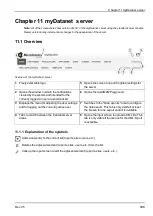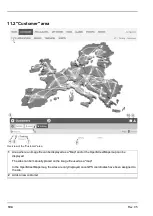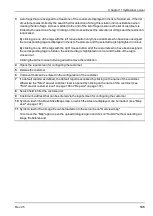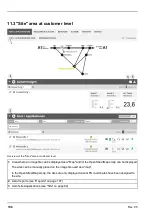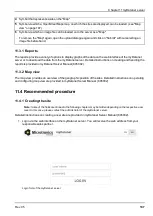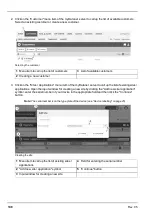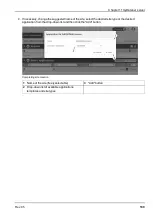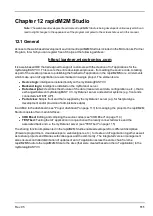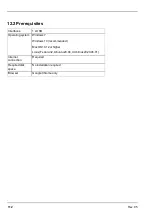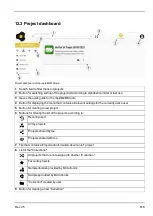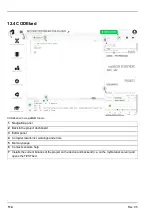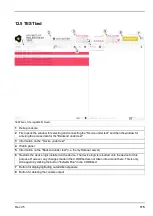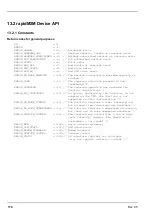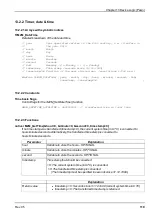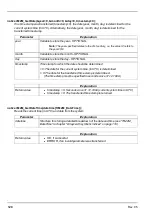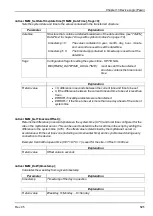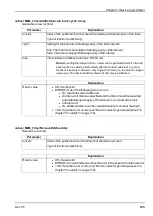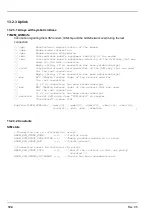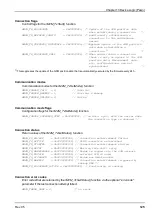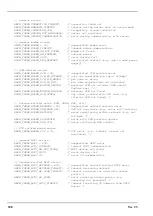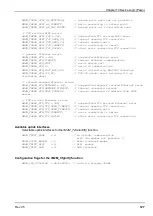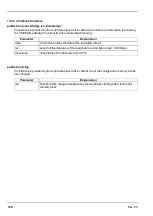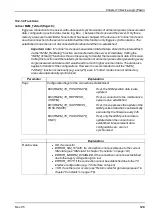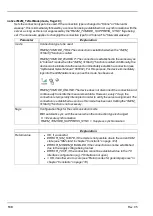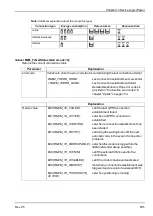
Chapter 13 Device Logic (Pawn)
Chapter 13 Device Logic (Pawn)
13.1 General
The following chapter describes the functionality of the device logic. The programming language used is
"Pawn" (previously SMALL), a scripting language similar to C that runs on embedded systems.
Additional, more detailed information is provided on the developer's website:
http://www.compuphase.com/pawn/pawn.htm.
There are several ways to create a device logic for the myDatalogEASY V3 :
l
Direct entry in the "Device Logic" input field in the "Control" configuration section
l
Upload of a previously created binary file (*.amx) to the myDatanet server
l
Usage of the CODEbed (see "CODEbed" on page 114) of the web-based development environment
rapidM2M Studio
13.1.1 Direct entry of a device logic
The device logic is entered via the "Control" configuration section (see "Control" on page 83) of the input
screen for configuring the site. "Pawn" must be selected as the "Device Logic Type" so that the
myDatalogEASY V3 interprets the commands entered under "Device Logic" as a pawn script.
13.1.2 Uploading a binary file
If the "Upload a compiled device logic" entry was selected via the "Device logic source" list selection in the
"Control" configuration section (see "Control" on page 83) of the input screen for configuring the site, a binary
file that was, for example, previously created via the web-based development environment rapidM2M Studio
(see "rapidM2M Studio " on page 111) can be uploaded to the myDatanet server. This is then loaded into the
myDatalogEASY V3 during the next connection. When using this method, "Pawn" must also be selected as
the "Device Logic Type" so that the myDatalogEASY V3 interprets the commands as a pawn script.
13.1.3 Using the CODEbed of the web-based development environment rapidM2M
Studio
The CODEbed is one of the two main interfaces of the web-based development environment rapidM2M
Studio . The CODEbed serves to create and compile source codes for all elements (device logic, backend
logic, data descriptor and portal view) of an IoT application. The functional scope of the rapidM2M Studio also
includes transfer of the compiled device logic into the myDatalogEASY V3 via a USB connection and copying
of the data descriptor to the development site with which the myDatalogEASY V3 is linked.
Rev. 05
117
Summary of Contents for myDatalogEASY V3
Page 2: ......
Page 13: ...Chapter 2 Declaration of conformity Chapter 2 Declaration of conformity Rev 05 13 ...
Page 14: ......
Page 42: ......
Page 76: ......
Page 88: ......
Page 102: ......
Page 110: ......
Page 116: ......
Page 234: ......
Page 244: ......
Page 252: ......
Page 254: ......
Page 266: ......
Page 276: ......

